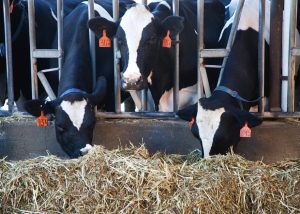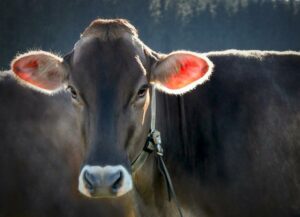Álvaro García
Chromium’s role in dairy nutrition
Chromium (Cr) is not classified as an essential trace mineral for dairy cows. Unlike zinc, copper, or selenium, it is not required to prevent a deficiency disease under normal feeding conditions. However, research has shown that in certain situations, such as during the transition period, early lactation, or under environmental stress, supplemental Cr can improve glucose metabolism, enhance insulin sensitivity, and boost production performance.
A brief history of Chromium in dairy cattle
Chromium was first identified in 1797 by French chemist Nicolas‑Louis Vauquelin, who isolated it from the bright red mineral crocoite. The name comes from the Greek chrōma, meaning “color,” referring to the vivid pigments of its compounds.
In 1955, Schwarz and Mertz linked Cr to the glucose tolerance factor (GTF), a dietary component that enhanced glucose use in animals. By the late 1980s, cattle trials began showing benefits of supplementation, particularly improved glucose metabolism and immune response under stress.
A 1993 dairy study (Kichura et al.) demonstrated increased milk yield and better immune status in transition cows receiving Cr. Additional research in the mid‑1990s confirmed benefits for reproduction and udder health. In 2009, the U.S. FDA granted Generally Recognized as Safe (GRAS) status for chromium propionate in dairy cattle. Since the 2010s, chromium propionate has been widely adopted in transition‑cow diets to support feed intake, energy balance, and immune resilience.
Forms of supplemental Chromium and their effectiveness
Different Cr sources vary widely in absorption, stability, and performance.
- Inorganic salts (e.g., chromium chloride, chromium sulfate) have extremely low bioavailability (<1%) and are rarely used today.
- Organic complexes (e.g., chromium yeast, Cr–amino acid chelates, chromium–methionine) have better absorption (5–15%) but variable performance depending on manufacturing quality, feed stability, and rumen survival.
- Chromium propionate, an organic salt of propionic acid is the most effective and consistently reliable form for dairy cattle. It is stable in feed, bypasses the rumen, is well absorbed in the small intestine, and is the only form specifically approved by the U.S. FDA for dairy cows.
Meta‑analysis and controlled trials consistently show that chromium propionate increases dry matter intake and boosts milk yield by +1.0 to +1.2 kg/day, especially during the transition and early lactation periods.
Research evidence in dairy cows
Global demand for dairy products continues to rise, and producers are seeking nutritional tools to improve efficiency and profitability. While macronutrient balance is fundamental, Cr supplementation has gained attention for its role in improving efficiency and performance under high metabolic demand.
A meta‑analysis of 26 studies (Malik et al., 2023) found that Cr supplementation increased:
- Dry matter intake by an average of 0.72 kg/day.
- Milk yield by an average of 1.20 kg/day.
The response was greater:
- In early lactation compared with mid‑to‑late lactation.
- With organic forms such as chromium propionate.
- In first‑calf heifers, which often face higher metabolic stress than multiparous cows.
Milk composition (fat, protein, lactose, solids‑not‑fat) was unaffected, indicating that chromium increases milk volume, not composition.
Results and implications
Chromium supplementation increased DMI by about 0.72 kg/day, with the strongest effects after calving. Yeast‑based and methionine‑bound forms showed notable intake gains, but chromium propionate remains the most consistent performer.
Milk yield rose by about 1.20 kg/day, with larger gains in primiparous cows and when Cr was provided in highly bioavailable forms. Increased yield is linked to both greater nutrient intake and Cr’s role in enhancing glucose utilization.
Because milk composition is unaffected, Cr’s benefit is primarily in producing more milk, rather than altering its components. Strategic supplementation during early lactation and in high‑stress periods offers the greatest potential return.
Return on investment (ROI)
The observed production response translates into a clear economic advantage:
- Milk value: +1.2 kg/day ≈ $0.50 per cow per day (milk at $0.42/kg or $0.45/L).
- Supplement cost: Chromium propionate ≈ $0.01 per cow per day.
- ROI: ~$15 return for every $1 invested; among the highest for any trace mineral additive.
Beyond yield gains, Cr can help improve energy balance, reduce metabolic stress, and potentially lower health costs during the transition period.
The full list of references used in this article is available upon request.
© 2025 Dellait Knowledge Center. All Rights Reserved.









